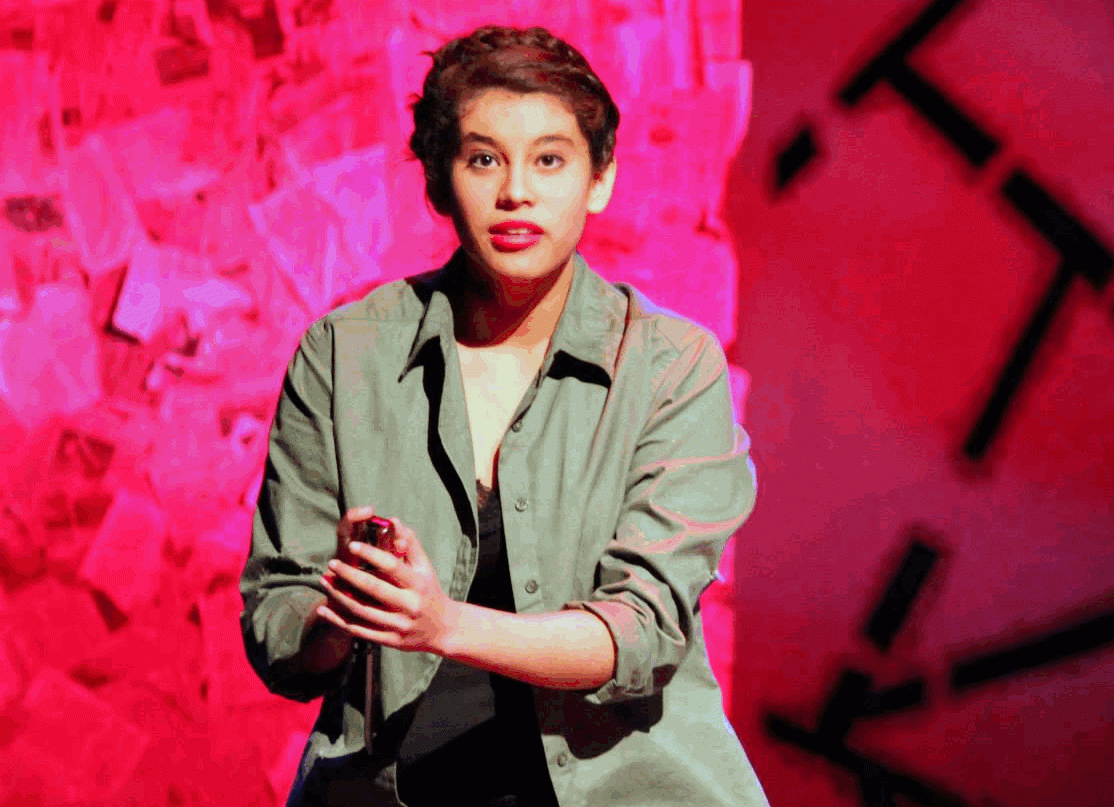How do we know where we are? Students will respond with many answers to this question. “We can see the walls.” “The people around us.” “Google maps?”It’s the opener to a discussion of where. Viola Spolin’s “Creating a Where” and the call for a “location” in the beginning of any improvisation have in common the mandate that good scene work take an empty space and transform it.
As an isolated skill, weighting “where” is extremely valuable to practice, and it is one that embeds itself deeply not just in improvisational scene work, but in the work of the actor, in script analysis and in set design.
WARMUPS FOR “WHERE”
- WELCOME TO FRANCE- Perhaps you’ve done the exercise with students where you’ve had them mill around shaking hands, and then have given them characters to change into while shaking hands. Try using music to further strengthen this. In an exercise introduced to me by Kevin Coleman at a Shakespeare Plays workshop, we were walking about when he suddenly said, “And welcome to France” and put on French cafe music, which changed our walking into promenading down the avenue, until we realized we were late, then lost, then, no, the clock was wrong and we had plenty of time, but wait, we were still lost, oh no, we knew where we were…
- SHIP AHOY- From Talia Pura’s excellent book STAGES: CREATIVE IDEAS FOR TEACHING DRAMA, I like to play music from PIRATES OF THE CARIBBEAN with this one. High energy game that has students:
- “hit the deck” (lie down on the ground)
- “man overboard” (one stands up and grabs a prone partner’s leg like a wheelbarrow)
- “officer aboard” (everyone stands and salutes)
- “helicopter” (partners grasp hands and spin)
- “dive bomber” (everyone simulates airplanes)
- “Captain’s daughter” (one person takes a knee, the other sits on their lap)
- DIRECTIONS TO MY HOUSE- This is for pairs. Each partner explains to the other how to get to his or her house from school.
- MY ROOM- Class sits in a circle. One person goes into the circle and literally “walks” us through their room, then goes back to the circle, sits down, and sends other students into their “room” to work with imaginary stuff. “Grab my book from the shelf and put it on my desk. ” “Turn on my computer”. And so on. Do this with a few volunteers.
- HEY BUDDY-From the Red Ladder Theatre Company. Useful to help students create details of a where through action. Students in lines of maybe five. Student at the head of line A mimes a simple object. Student in line B tries to guess what it is by saying “Hey Buddy, get away from my toothbrush, my hairdryer,my blender…” whatever it is. When person B guesses it, they high-five person A and go to the end of the A line, and person A goes to the end of the B line. Continue as necessary, and to intensify, narrow what can be mimed. “Anything from a kindergarten classroom.” “Something you only find in a gym.”
- OBJECT SWAP- Start this in a circle. Work with air like clay, then pull an object out of the air. Let students work on this simultaneously. When you are all holding your mimed objects, turn to one student and say, “Do you want this thing I have?” Then describe the thing, but don’t tell them what the thing is. Say you have made a jar with a butterfly in it. Tell them it’s fragile, it has something alive in it, you can see the thing, the thing has wings, and the thing is colorful and there are lots of varieties of it. When they figure it out, have them describe what they have to you, and give them your jar and take their hamster or whatever. Let everyone go around and trade objects for awhile. Then ask, who got something beautiful, dangerous, expensive, unusual, scary, and listen to their answers.
- BOOKSHELF- In partners, students can build a bookshelf. This works great right after object swap. Have them build their imaginary bookshelf out of any material they want, then with their partner put three things on it. Something rare, a piece of technology, something alive. Have them step back and admire it. Then, and they love this, have them start an argument with each other about the bookshelf. Let the argument lead to a “breakup, ” where they must divide the objects and go in search of a new partner with whom to rebuild. Have them build a new bookshelf with their new partner, then ask them what was on their first bookshelf, why they broke up with their first partner, and what was better about the new one. The answers you will get are incredible.
- FIVE IN, FIVE OUT. Students can retire to the audience. Ask for a volunteer and give them a location (convenience stores seem to work really well). Have this volunteer go onstage and interact with one mimed thing in the 7-11 and then leave. Then send the next one in. They have to interact with the first thing and then create their own. The next person must interact with the first two things, then create another, and so on, up to five. Then start a new scene.
These exercises will go a long way towards preparing students to work with floorplans, which I’ll describe in the next installment. Stay tuned.


